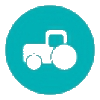With new satellite launches planned for this year, Galileo is poised to move into Early Services provision by late 2014/early 2015. The next release of EGNOS is already being developed and will provide improved signal and capacity performance and increased coverage by late 2017. On top of this, the European GNSS market is rapidly expanding – both upstream and downstream. In fact, GSA analysis shows growth over the coming years to continue at nearly 10 percent of the overall GNSS market share.
Horizon 2020 is the financial instrument implementing the Innovation Union, a Europe 2020 flagship initiative aimed at securing Europe's global competitiveness. Running from 2014 to 2020, with an expected budget of over €70 billion, the EU’s new programme for research and innovation is part of the drive to create new growth and jobs in Europe. The European GNSS Agency will manage the H2020 Call for Applications in Satellite Navigation-Galileo (Space Work Programme) under the Delegation Agreement with the European Commission, DG Enterprise and Industry.
“Judging by the success of the FP7 funding period, the Call for Applications in Satellite Navigation-Galileo-2014 should result in the development of EGNSS applications and the implementation of pilot projects,” said Carlo des Dorides, Executive Director, GSA, speaking at a daylong H2020 workshop held in Prague on 4 February. “It has the potential to substantially contribute to the growth and strengthening of the European GNSS market and have a significant impact on sectors where the EU’s added value and cost effectiveness are the greatest."
The proposals submitted in Galileo Call within Innovation Actions Proposals should aim at developing new innovative EGNSS applications in different market segments, with future commercial impact.
Aviation
 Today’s GNSS penetration in the global aviation market is over 80% (and up to 90% in the instrumental user sub-segment). The shipments of EGNOS enabled devices are expected to dominate the entire market, including the regional, business and general aviation segments. The penetration of SBAS enabled units in equipped aircraft reached 30% in 2013 in regional, business and IFR General Aviation and it is expected to increase in the coming years. Commercial aircrafts such as the A350 will be also equipped with EGNOS in the near future. Galileo will add other opportunities for aviation users contributing to the future multiconstellation environment. It will also enable advanced ground based augmentation systems.
Today’s GNSS penetration in the global aviation market is over 80% (and up to 90% in the instrumental user sub-segment). The shipments of EGNOS enabled devices are expected to dominate the entire market, including the regional, business and general aviation segments. The penetration of SBAS enabled units in equipped aircraft reached 30% in 2013 in regional, business and IFR General Aviation and it is expected to increase in the coming years. Commercial aircrafts such as the A350 will be also equipped with EGNOS in the near future. Galileo will add other opportunities for aviation users contributing to the future multiconstellation environment. It will also enable advanced ground based augmentation systems.
European GNSS plays an important role in nearly all aviation sectors. For example, in business aviation EGNOS is increasing accessibility to smaller airports. In general aviation EGNOS is enhancing safety via increased situational awareness. And in the regional jet market, EGNOS is providing access to smaller aerodromes – including those that are not ILS equipped.
Fostering further GNSS adaptation in aviation is a key focus of Horizon 2020, in particular creating tools and methods to enable LPV implementation to small airports. There is also an opportunity to increase its use in the helicopter sector.
GNSS opportunities in Aviation
FP7 Success stories - Example in aviation, FilGAPP project
Road
 After LBS, the road sector is the second largest GNSS segment. This market is expected to continue to grow, with new applications supplementing the traditional navigations solutions. Other drivers of growth include lower costs of data connectivity and an increasing number of embedded devices and on-board units.
After LBS, the road sector is the second largest GNSS segment. This market is expected to continue to grow, with new applications supplementing the traditional navigations solutions. Other drivers of growth include lower costs of data connectivity and an increasing number of embedded devices and on-board units.
Already both EGNOS and Galileo can be found in many GNSS receivers for road applications. EGNOS improves accuracy and provides information on the reliability of GPS system and is already used in applications for tolling and the monitoring of dangerous goods. Galileo will soon be adding value to all applications by providing increased availability, especially in urban environments. Additional benefits from Galileo are expected when its dual frequency is fully exploited by consumer devices.
Within this call, areas of interest for GNSS innovation in the road sector include:
- ADAS/connected and autonomous vehicles
- eCall
- Digital Tachograph/dangerous goods tracking
- Pay-as-you-drive
- New distance based road pricing solutions
GNSS opportunities in road transportation
Rail
 Compared to other industries, GNSS adoption in railways is progressing at a slower rate, especially due in part to the environmental challenges of using GNSS within the unique sector. In fact, GNSS systems are currently used primarily for non-safety critical applications. This is a market trend expected to continue, with non-safety critical applications increasing, but being complimented by safety critical applications in such areas as signalling and train control.
Compared to other industries, GNSS adoption in railways is progressing at a slower rate, especially due in part to the environmental challenges of using GNSS within the unique sector. In fact, GNSS systems are currently used primarily for non-safety critical applications. This is a market trend expected to continue, with non-safety critical applications increasing, but being complimented by safety critical applications in such areas as signalling and train control.
That being said, European GNSS has a unique value proposition to offer the rail sector. Together, EGNOS and Galileo can bring logistics, asset management, track maintenance, passenger information services and driver assistance into the fold. Thus, the current call is interested in research focused on:
- Mature GNSS enabled products for low density line signalling
- Use of European GNSS to complement ERTMS
- Evolution of non-safety critical applications
- Multimodal applications and asset management/logistic solutions for improving supply chain visibility
Agriculture
 Precision agriculture is a highly effective farming strategy that increases crop yield and productivity while lowering costs and minimising environmental impact. With costs perpetually on the rise and environmental demands gaining ground by the day, efficient and sustainable farming solutions are needed more than ever.
Precision agriculture is a highly effective farming strategy that increases crop yield and productivity while lowering costs and minimising environmental impact. With costs perpetually on the rise and environmental demands gaining ground by the day, efficient and sustainable farming solutions are needed more than ever.
Looking on the horizon, falling prices is expected to be an important driver for the update of precision agriculture. With an increase in the demand for crop production using limited resources, precision agriculture will play an essential role, with EGNOS and Galileo providing an attractive value proposition.
Examples of key areas for EGNOS and Galileo applications within this call include:
- Tractor guidance and automatic steering solutions, leveraging EGNOS and/or Galileo dual frequency resp. Commercial Service signals
- Variable Rate Applications leveraging local conditions on the field for precise control over products such as fertilisers and nutrients
- Farm management solutions, including use of real-time information for monitoring the location and status of farm equipment
- Applications and solutions leveraging EGNSS added value in a multi-constellation and multi-frequency environment.
- Applications and solutions combining EGNSS and Copernicus.
- Farm management solutions, including use of real-time information for monitoring the location and status of farm equipment
- Tractor guidance
- Variable Rate Applications leveraging local conditions on the field for precise control over such farming inputs as fertilisers and nutrients
- Automatic steering solutions
GNSS opportunities in precision agriculture
Surveying and Mapping
 The use of GNSS in mapping often means services with centimetre level accuracy and substantial costs. It can also imply significant investment in infrastructure for service providers or regional authorities, as well as complex and costly equipment and software solutions for professionals.
The use of GNSS in mapping often means services with centimetre level accuracy and substantial costs. It can also imply significant investment in infrastructure for service providers or regional authorities, as well as complex and costly equipment and software solutions for professionals.
EGNOS is already contributing to increasing the use of GNSS in real time mapping solutions by providing free accuracy that is widely available. Soon, Galileo will be complimenting EGNOS, increasing the GNSS value proposition for surveying.
Examples of key areas for EGNOS and Galileo applications within this call include:
- Galileo enabled receivers certified for CAP field boundary measurements
- Mapping application for cadastral surveys used for restoration work following a natural disaster
- Support thematic mapping for municipalities, forestry and part management, surveying of utility infrastructures, etc.
GNSS opportunities: EGNOS for Mapping & Galileo for Surveying
ENCORE for land management in Brazil
Maritime
 Global maritime traffic is increasing and Europe’s ports and inland waterways are becoming more congested. This growth requires new solutions to improve efficiency and safety and minimise the impact of maritime traffic on the environment.
Global maritime traffic is increasing and Europe’s ports and inland waterways are becoming more congested. This growth requires new solutions to improve efficiency and safety and minimise the impact of maritime traffic on the environment.
Both EGNOS and Galileo serve as the backbone for a wide-range of solutions tailored to navigation at sea and in inland waterways of commercial and leisure vessels, search and rescue activities, port operations and environmental protection.
The focus of this first call is on applications, with a particular interest in the development of products as well as end-to-end solutions. Opportunities include developing applications for:
- General navigation
- Automatic collision avoidance
- Track control
- Traffic management
- Port operations
- Fisheries monitoring
- Recreation and leisure activities
GNSS opportunities in Maritime
SAFEPORT: Project presentation
Location Based Services
 In terms of volume, the Location Based Services segment is by far the largest. This isn’t likely to change as our daily lives continue to fill with various mobile apps used for navigation, personal tracking, emergency calling, gaming, advertising, social interaction and general well-being.
In terms of volume, the Location Based Services segment is by far the largest. This isn’t likely to change as our daily lives continue to fill with various mobile apps used for navigation, personal tracking, emergency calling, gaming, advertising, social interaction and general well-being.
- Although the LBS market is expected to continue to grow at a remarkable rate, it is also a very competitive market. Potential areas of research within the H2020 framework could include:
- Galileo enabled software for applications geared towards consumer devices
- Safety related applications
- Ensuring seamless transitions between indoor and outdoor use and seamless integration of various LBS technologies across devices
- Augmented reality applications
GNSS opportunities in Local Based Services
SMART-WAY. A FP7 Success Story in LBS
H2020 in Brief
There are a number of features in Horizon 2020 that make it easier to apply for funding. For example, one common, web-based Participant Portal was established for submitting proposals, electronic administration of EU-funded research and innovation projects, and for managing the proposals and projects throughout their lifecycle.
Who Can Apply
All applications within Innovation Actions (IA) must include a minimum of three independent legal entities established in different Member States or Associated Countries. In Coordination and Support Actions (CSA), only one legal entity is required.
How to Apply
The application process is simple:
Step 1 - Find a suitable Call for Proposals
Step 2 - Find project partners or apply as an individual team or researcher
Step 3 - Create an account on the Participant Portal
Step 4 - Register your organisation
Step 5 - Submit the proposal before the 3rd April
What are the Funding Rates?
The H2020’s simplified funding model applies the same rate to all beneficiaries and activities in the grant. The rate is fixed ex-ante in the WP (i.e., not negotiated per project), with funds available for up to 100% of total eligible costs. However, funding is limited to a maximum 70% for actions close to market (IA), except for non-profit universities and research institutions who will be able to receive up to 100%. The specific rate will be determined in view of the overall character of the activities to be supported.
How are Submissions Evaluated?
On receipt of the proposal, the department in charge of the implementation of the programme will check it for eligibility in accordance with the defined programme criteria. All eligible proposals will then be independently assessed against pre-determined evaluation criteria by at least three experts.
Where can I find more information?
More information is available here.
- Be focused and concrete
- Build on you technical and market understanding and expertise
- Demonstrate a clear motivation to commercialize the products and services
- Focus on the practical impact
- Select applications where EGNOS and Galileo differentiators are key for the product or services success
Media note: This feature can be republished without charge provided the European GNSS Agency (GSA) is acknowledged as the source at the top or the bottom of the story. You must request permission before you use any of the photographs on the site. If you republish, we would be grateful if you could link back to the GSA website.